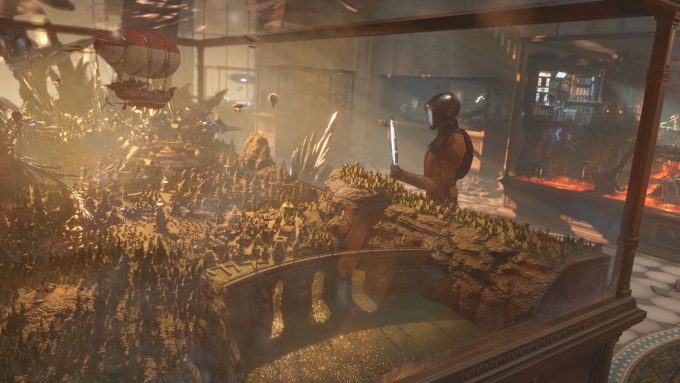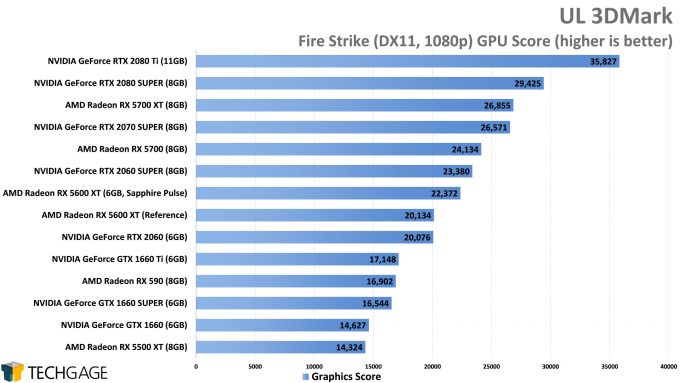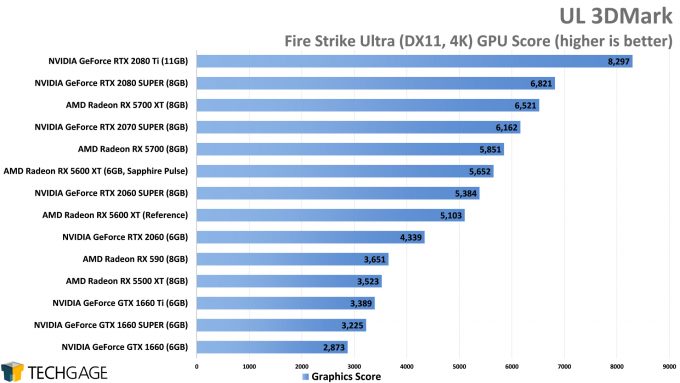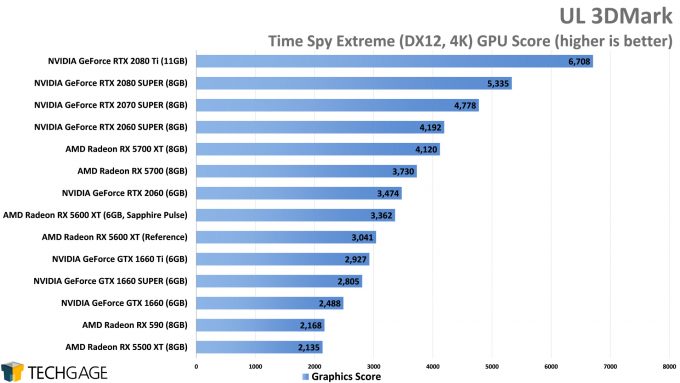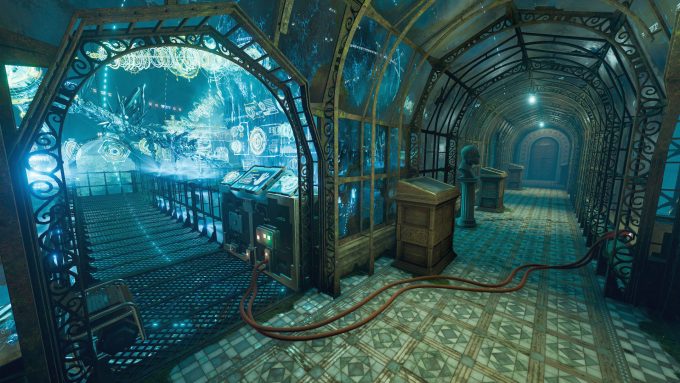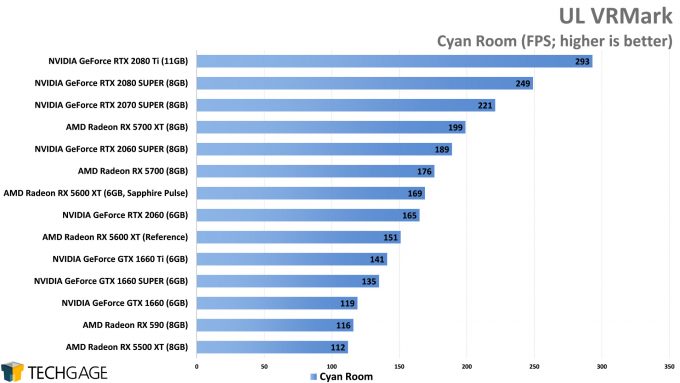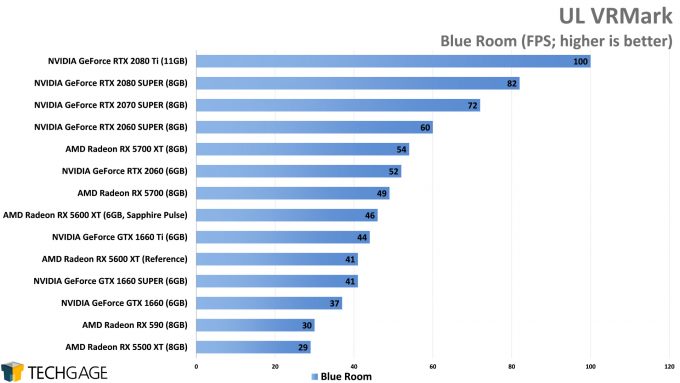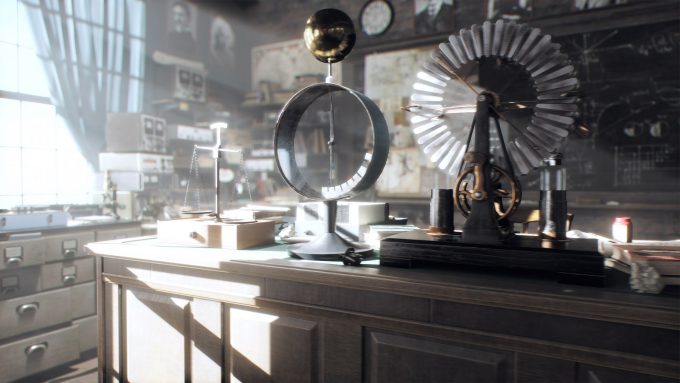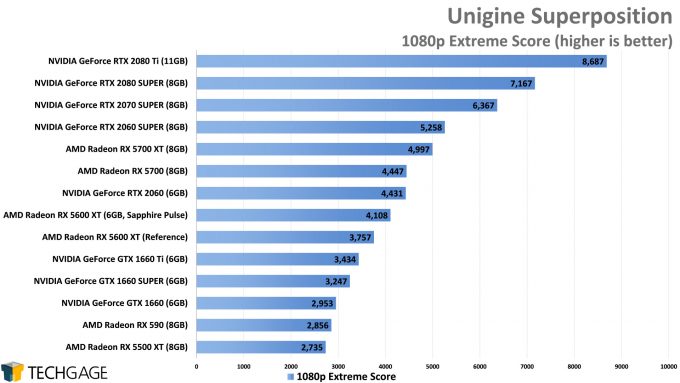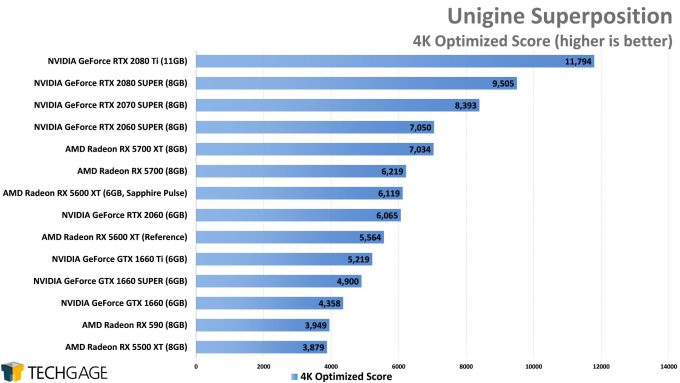- Qualcomm Launches Snapdragon 4 Gen 2 Mobile Platform
- AMD Launches Ryzen PRO 7000 Series Mobile & Desktop Platform
- Intel Launches Sleek Single-Slot Arc Pro A60 Workstation Graphics Card
- NVIDIA Announces Latest Ada Lovelace Additions: GeForce RTX 4060 Ti & RTX 4060
- Maxon Redshift With AMD Radeon GPU Rendering Support Now Available
AMD Radeon RX 5600 XT Graphics Card Review
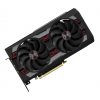
AMD’s latest gaming GPU to join its Radeon Navi family is the RX 5600 XT. With its price-point, and 6GB framebuffer, the RX 5600 XT takes NVIDIA’s GeForce RTX 2060 head-on. We’re taking a look at the card with both its reference BIOS, as well as its performance-boosting BIOS, which will bump both the GPU and memory clocks.
Page 5 – Synthetic: 3DMark, VRMark & Superposition
UL 3DMark
While many compare against just one 3DMark score, it’s important to look at the bigger picture. In this case, that means running both the DX11 and DX12 tests to see how things change up. On the RX 5600 XT front, the Sapphire Pulse retail card boosts performance by about 13% in the DirectX 11 test, and 10% in DirectX 12. If you needed any more proof that you want the boosted-clock RX 5600 XT, this is it.
In Fire Strike, the RX 5600 XT Pulse outperforms even the RTX 2060 SUPER – not just the regular RTX 2060. Things change with the DX12 Time Spy, with even the boosted Pulse card falling behind the original RTX 2060. See? One single set of results would hide these scaling differences.
How does all that compare to real-world gaming? Well, we’ve had a bunch of that on the previous pages. 3DMark puts DX12 performance in NVIDIA’s favor, but we have not consistently seen that behavior in the real-world. In Borderlands 3, for example, we’ve found AMD’s DX12 to perform better than NVIDIA’s – but that’s just a single game.
UL VRMark
VRMark is similar to 3DMark in that multiple tests could deliver different scaling. In the Cyan room test, the 5600 XT Pulse proves to be much better than the reference clock, beating out the RTX 2060 by a few frames. In the Blue room, the roles again change a bit, with NVIDIA having an overall advantage. Obviously, as you can tell by the FPS results here, the absolutely only GPU that passes the test is the RTX 2080 Ti. Thankfully, this Blue room test represents future workloads. The more modest Cyan room gives far better results if translated to real VR use.
Unigine Superposition
To wrap up our testing, we have Superposition. Mimicking what we’ve seen a bunch of times before, the Sapphire Pulse clocks outperform the reference clocks by a fair margin. Again, in one test, 1080p, the RTX 2060 outperforms the Pulse, but a trade is made at 4K, which uses less extreme settings, but at a higher resolution.
Support our efforts! With ad revenue at an all-time low for written websites, we're relying more than ever on reader support to help us continue putting so much effort into this type of content. You can support us by becoming a Patron, or by using our Amazon shopping affiliate links listed through our articles. Thanks for your support!




